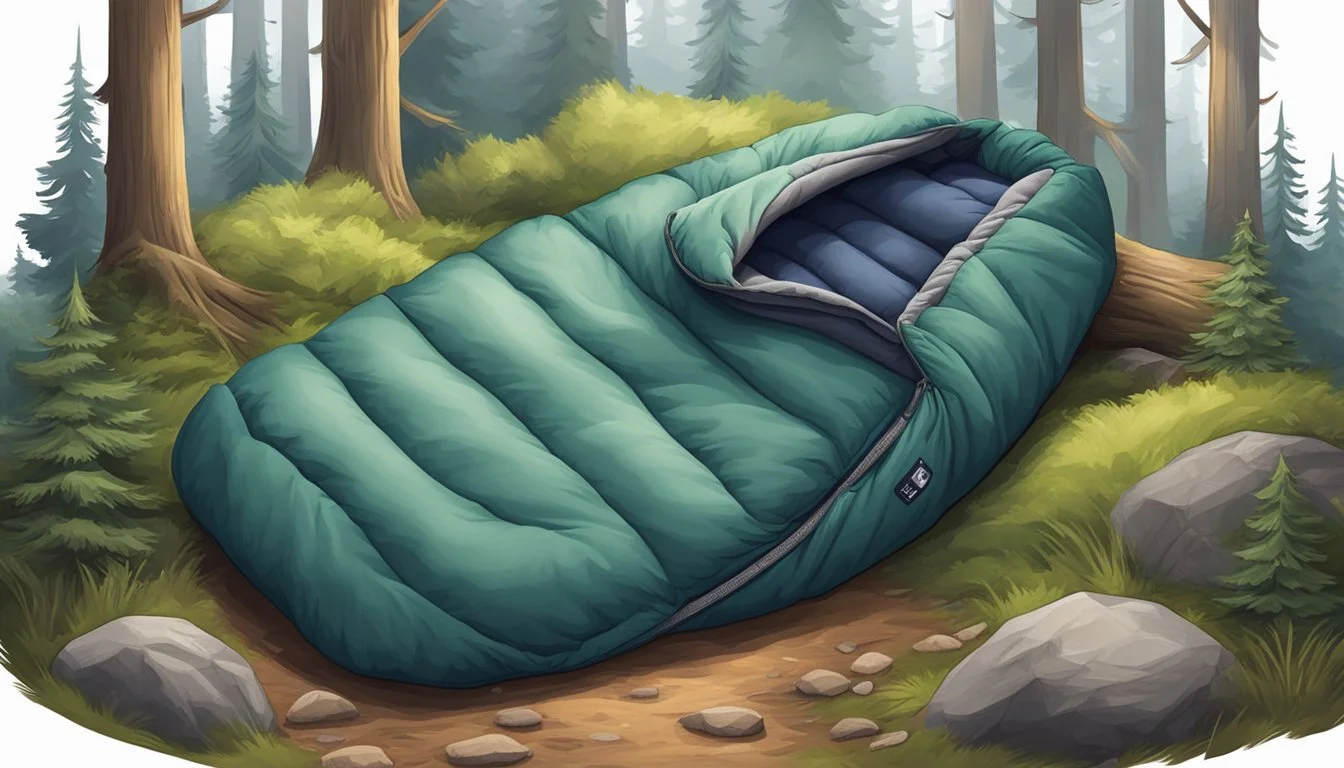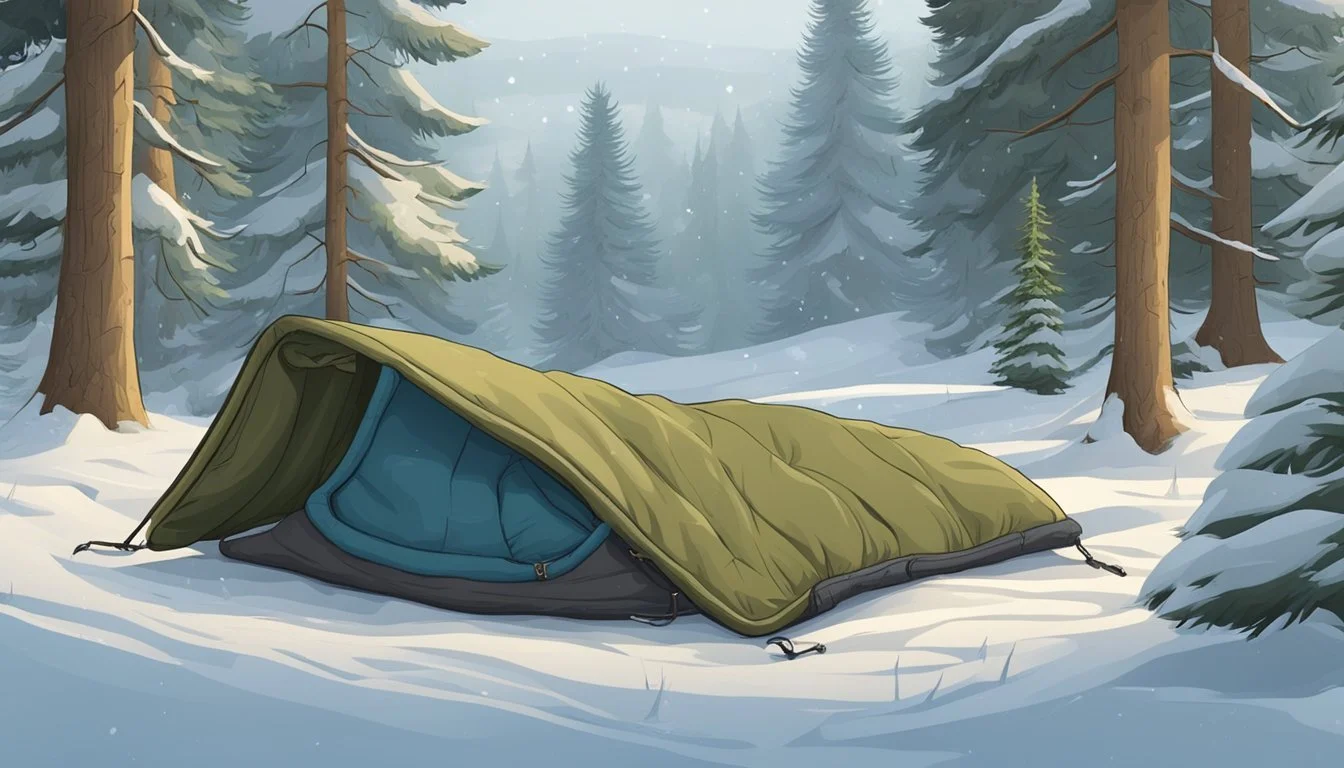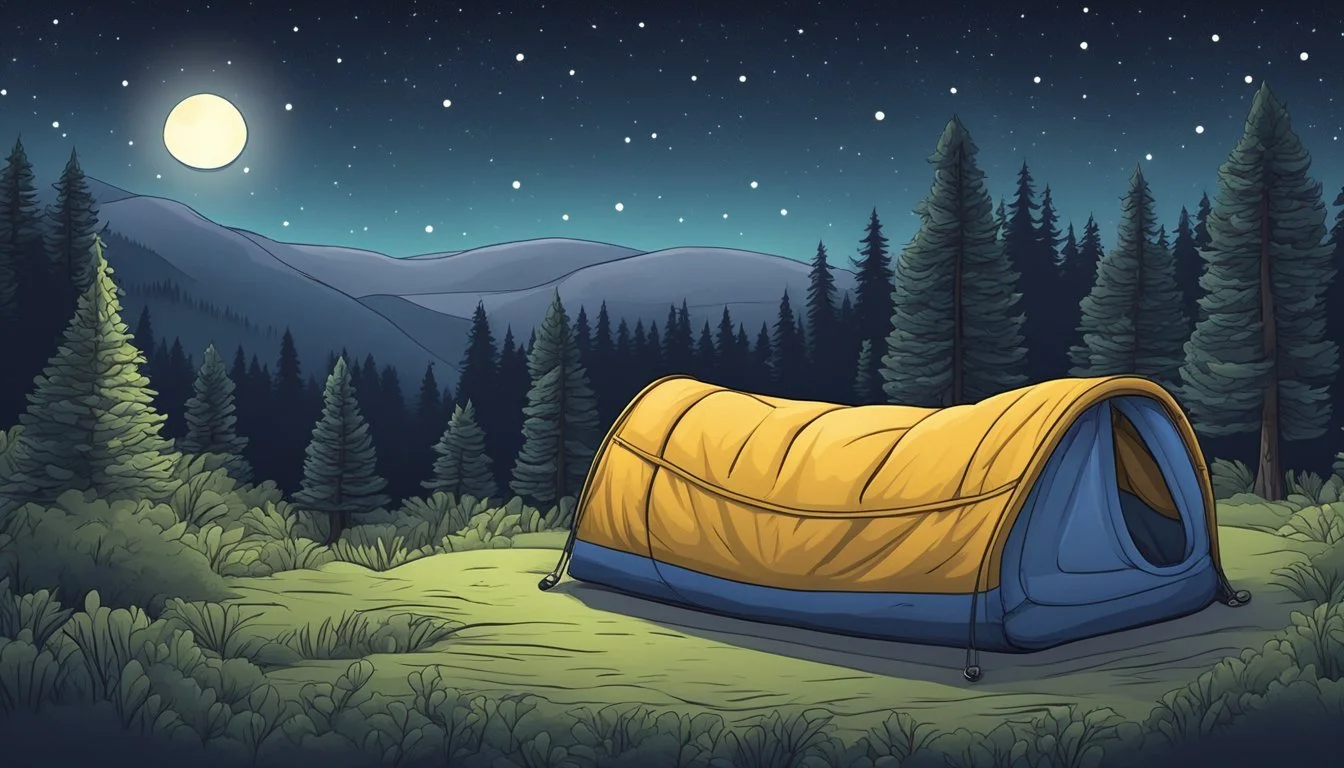Best Hunting Sleeping Bag
Top Picks for Outdoor Comfort
Hunters often face challenging elements while pursuing their game, and rest is critical to maintaining peak performance. The best hunt sleeping bag provides comfort during these crucial rest periods and is tailored to withstand the varied conditions encountered in the wild. These sleeping bags are designed with durability and insulation properties that cater to the hunter's needs, such as withstanding lower temperatures, repelling water, and packing down to a manageable size for transport.
Selecting the best hunt sleeping bag involves considering several factors, such as the environment, season, and the hunter's sleep preferences. A high-quality sleeping bag for hunting is often filled with hydrophobic down or synthetic insulation. It balances warmth and weight, like the NEMO Disco 15, identified for its spacious design and temperature rating. It makes it versatile for side-sleepers in more relaxed environments.
The needs of hunters vary widely based on the terrain and type of hunt, necessitating a range of sleeping bag options. Some might prioritize a lightweight design for backcountry hunting, while others might need a more robust bag for stationary camps. The best sleeping bags for hunting are the ones that align with the specific demands of the hunter, ensuring comfort and resilience without compromising mobility or precious space in a pack.
Understanding Sleeping Bag Types
Selecting the right type of sleeping bag can significantly enhance comfort and efficiency during hunting expeditions, as each type offers distinct features and benefits suited to various environments.
Mummy Bag Vs. Rectangular Bags
Mummy bags are designed to be form-fitting, with a narrower shape that tapers towards the feet. This design minimizes air pockets, maximizing heat retention, which is crucial in colder environments. They are generally lighter and more compact, making them an excellent choice for backpacking hunters with limited space. Contrastingly, rectangular bags provide more room, allowing for greater movement within the bag. They are well-suited for use in base camps or during hunts where extra weight and portability is less of a concern.
Down Vs. Synthetic Insulation
Regarding insulation, a down sleeping bag is filled with fine feathers from ducks or geese, offering a superior warmth-to-weight ratio. A down bag is highly compressible and have a long lifespan when properly cared for. However, they have a few drawbacks such as their insulation capacity significantly reduces when wet. On the other hand, synthetic bags use man-made fibers that retain insulating properties better when damp and dry quicker than down. Synthetic insulation is often a more affordable price but comes with weight and packed size trade-offs.
Specialized Hunt Sleeping Bags
Specialized hunt sleeping bags are tailored for the hunter's specific needs in the wild, often featuring elements like camouflage patterns or quieter materials to prevent startling game. Some bags might also have reinforced sections to withstand rugged use or additional insulation in areas prone to heat loss. Hunters should seek features like warmth ratings appropriate for the environments they'll be in and consider whether they need enhancements like hydrophobic downfill for wet conditions or specialized shapes that cater to their sleeping style.
Key Features to Consider
When selecting a hunt sleeping bag, one must prioritize the specifications that match their hunting conditions and personal needs. These include warmth, weight, comfort, durability, and water resistance.
Temperature Ratings and Warmth
Temperature rating is a crucial feature to help gauge a sleeping bag's warmth in cold or warmer weather. Users should look for a warmth rating that fits the coldest conditions they anticipate to keep your body warm. Considering that the listed rating often represents survival, not comfort or temperature, is essential. This means one should opt for a sleeping bag rated a few degrees lower than expected for added warmth assurance.
Survival Temperature: This is the lowest temperature at which the sleeping bag will keep a user alive.
Comfort Temperature: The range within which the user will stay comfortably warm.
Weight and Packability
A sleeping bag's weight and packability are vital for backcountry hunting, where gear has to be carried over long distances. The best sleeping bags balance low weight with adequate insulation.
Weight Considerations: Aim for a sleeping bag that is lightweight yet insulating. The average weight for a hunting bag is around 2 to 4 pounds.
Packability refers to how compact the sleeping bag can be when not in use. Down insulation tends to be more packable compared to synthetic.
Comfort and Size
Comfort and size considerations ensure a restful sleep. The sleeping bag should be roomy enough to allow movement, particularly for side sleepers.
Extra Wiggle Room: Key for side-sleepers.
Dimensions: Should accommodate the user’s height and build.
Durability and Water Resistance
Durability and water resistance determine a sleeping bag's longevity and performance in wet conditions. Hunters should look for materials that are both durable and offer some level of water resistance.
Durable Materials: Typically involve ripstop fabrics and strong stitching.
Water-Resistant Coating: A feature such as hydrophobic down or water-resistant synthetic insulation aids in keeping moisture at bay.
Sleeping Bag Materials
The materials used to make hunt sleeping bags are pivotal in determining their performance in the field. Specifically, the insulation type, be it a natural or synthetic fill, as well as any water-resistant treatments applied, will directly affect the bag's warmth, weight, and durability.
Down Filling and Fill Power
Down insulation is prized for its exceptional warmth-to-weight ratio and compressibility. Fill power refers to the volume one ounce of down can occupy; higher fill power indicates higher quality and better insulation efficiency. For instance, a fill power of 600 or more is considered high and denotes a dense, warm, and lightweight sleeping bag. Hydrophobic down is a more recent innovation where the down feathers are treated to withstand moisture, preventing the loss of insulating properties in damp conditions.
Synthetic Insulation Advantages
Synthetic insulation is made from polyester fibers designed to mimic the qualities of down while excelling in wet conditions. They retain heat even when wet, making them a reliable choice for damp environments. Synthetic bags are generally more affordable and accessible to care for than down, as they are less delicate and can often be machine-washed. However, they are usually heavier and less compressible than their down counterparts, which is a consideration for hunters carrying their gear.
Water-Resistant Treatments
Durable Water Repellent (DWR) treatments are commonly applied to the outer fabric of sleeping bags to provide an additional layer of moisture protection. This treatment allows water droplets to bead up and roll off the fabric rather than soaking in. A sleeping bag that combines hydrophobic down with a DWR-treated shell offers hunters a high level of protection against the elements, making it a potent combination for those seeking insulation and water resistance in diverse hunting conditions.
Seasonality and Environment Adaptability
Choosing the right hunt sleeping bag requires consideration of the season and environmental conditions. A bag must provide comfort and protection against the elements unique to the time and place of the hunt.
Cold Weather and Freezing
In cold weather, particularly when temperatures drop below freezing, a sleeping bag's insulation becomes critical. Bags with a temperature rating of 15° F (-9° C), such as the NEMO Disco 15, equipped with 650-fill hydrophobic down, are well-suited for winter and cold weather hunts. They should also have ample room for freedom of movement, which is vital in retaining body heat.
Wet Climates and Dampness
For wet climates, a hunter needs a sleeping bag that can resist water and dampness. Hydrophobic down or synthetic insulation can maintain insulating properties even when wet. Features like water-resistant outer shells and DWR (Durable water-repellent) coatings offer additional protection.
Versatility for Different Hunting Seasons
A versatile sleeping bag caters to varied hunting seasons, including spring and fall shoulder seasons. Look for bags designed with adjustable ventilation options to accommodate the fluctuating temperatures and conditions a hunter may face from early fall to late spring. Bags that can be unzipped as a quilt in hot weather yet zipped and insulated for colder nights offer the adaptability required for year-round hunting.
Enhancing Sleeping Comfort
Sleeping comfort is pivotal for restful nights during a hunting trip, so your overall sleep system needs to mirror your requirements. The right gear can transform a sleeping area into a cozy retreat, promoting better sleep and preparation for the next day's activities. Sleeping comfort is personal; one person prefers to sleep when warm, while another is a cold sleeper. Choose accordingly.
Sleeping Pads and Pillows
Sleeping pads add a layer of cushioning against the hard ground and provide insulation from the cold. A good pad can distinguish between a fitful night and a restful sleep. While often overlooked, pillows afford a significant comfort boost, supporting the neck and aligning the spine. A sleeping pad can be inflatable for compact storage or made of compressible materials.
Sleeping Pad Options:
Inflatable pads: Offer customizable firmness, pack down small.
Foam pads: Provide excellent insulation, durable with no risk of puncture.
Pillow Types:
Compressible pillows: Made from foam or synthetic fills, similar to home bedding.
Inflatable pillows: Lightweight and space-saving when deflated.
Choosing the Right Bag for Your Hunting Trip
Selecting the right sleeping bag is imperative for any hunting trip, as it can significantly impact comfort and success. Hunters must consider the environment, budget, and physical requirements before deciding.
Analyzing Your Hunting Locations and Game
The environmental conditions and targeted game are pivotal factors when planning your hunting trip. For deer and elk hunters who frequent mountainous terrains, a bag rated for lower temperatures will be necessary to combat the colder nights. Conversely, those pursuing moose in wetter climates should look for sleeping bags with waterproof features and quick-drying materials. It's essential to choose a bag that matches the specific conditions of your hunting location, whether backcountry or car camping, to ensure a restful night's sleep.
Sizing and Fit Recommendations
The size and fit of a hunt sleeping bag are crucial for warmth and comfort. A sleeping bag should correspond to the hunter's body size to maintain heat without excess space, which could reduce the bag's insulating capabilities. Here are general recommendations:
Mummy Bags: Ideal for retaining heat and minimizing pack space. It is less roomy, which may not suit all sleepers.
Rectangular Bags: Offer more room to move but are typically bulkier and less heat-efficient.
When trying out sleeping bags, it is advisable to mimic your usual sleeping position to ensure it accommodates your needs, especially if you are a side sleeper requiring more elbow and knee room.
Conclusion
When selecting the best hunt sleeping bag, one must consider several critical factors to ensure a comfortable and successful outdoor experience. Key attributes such as temperature ratings, fill material, and design are paramount.
Temperature Rating: The NEMO Disco 15 with a 15° F rating is suitable for cold environments, offering ample space for side-sleepers. TETON Sports 1025L Deer Hunter is designed to withstand temperatures as low as -35° F, providing exceptional warmth for harsher conditions.
Fill Material: Hydrophobic down, as found in the NEMO Disco 15, offers a balance of warmth and moisture resistance. Meanwhile, the TETON Sports model boasts heavy-duty insulation suitable for extreme cold.
Weight and Built: Weight considerations are pivotal for hunters who traverse rugged terrains. A lighter bag, such as the NEMO Disco 15 (2 lb 11 oz), is easier to carry, whereas the TETON Sports Deer Hunter is notably heavier (17.5 Pounds) but prioritizes warmth.
Feature NEMO Disco 15 TETON Sports Deer Hunter Temperature 15° F -35° F Fill Material 650-fill hydrophobic Heavy-duty synthetic Weight 2 lb 11 oz 17.5 Pounds
In conclusion, the decision should reflect the hunter's specific needs. Products like the NEMO Disco 15 and TETON Sports Deer Hunter emerge as top contenders. Hunters must assess individual requirements for their particular hunting environment and choose a sleeping bag with the best warmth, weight, and comfort combination.






